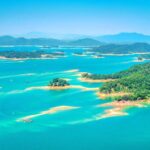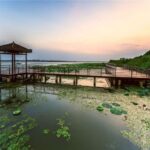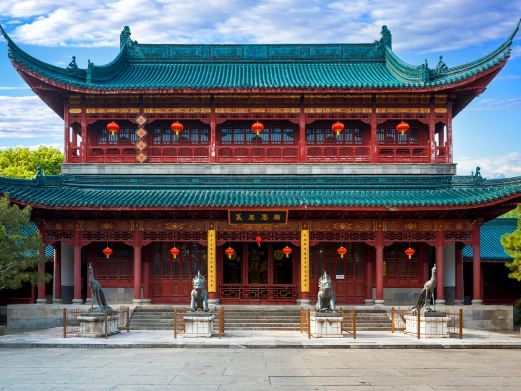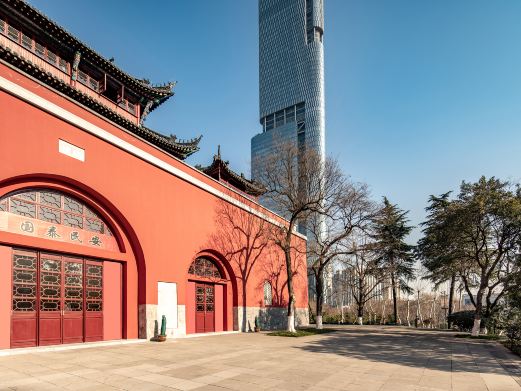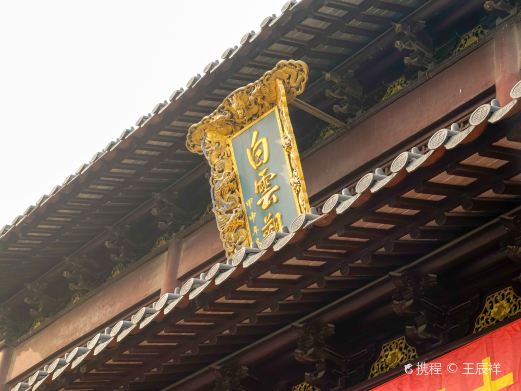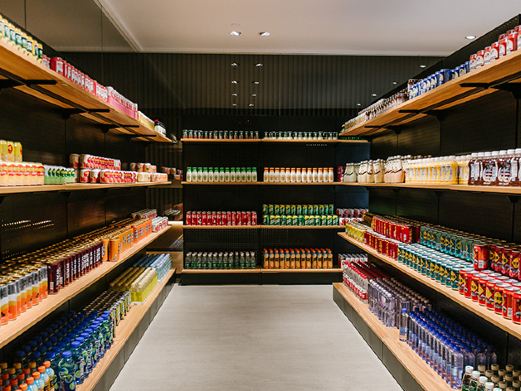The 37th China · Qinhuai Lantern Festival. The Qinhuai Lantern Festival is also known as ‘Jinling Lantern Festival’, ‘Confucius Temple Lantern Festival’, and ‘Nanjing Lantern Festival’. It is mainly held during the Spring Festival and Lantern Festival every year. Impressive Qinhuai, with brilliant lanterns; ten miles of prosperity, ancient charm and leisure. Among the numerous intangible cultural heritage items in Qinhuai, the ‘Qinhuai Lantern Festival’ is undoubtedly one of the most dazzling.
Since the Qinhuai District resumed holding the annual ‘Qinhuai Lantern Festival’ in 1986, the Qinhuai Lantern Festival has made great progress. In 2006, the ‘Qinhuai Lantern Festival’ was selected into the first batch of national intangible cultural heritage lists, making the brand of Qinhuai culture famous. Nowadays, the folk tradition of ‘going to Confucius Temple to enjoy lanterns during the Spring Festival’ has long been one of the essential activities for Nanjing citizens to celebrate the New Year. This lantern festival is mainly held in Confucius Temple, Menda, and the ten-mile Qinhuai water tour route, while also taking into account the creation of a festive atmosphere around Confucius Temple, and setting up various lantern groups. 1. Exhibition area in the core scenic area of Confucius Temple: 31 lantern groups are set up in ticketed scenic spots such as Dacheng Hall and the Imperial Examination Museum (including the South Courtyard) and public areas of the central square of Confucius Temple. With excellent traditional Chinese culture as creativity, it shows the essence and unique charm of Chinese culture.2. Exhibition area on the ten-mile Qinhuai water: 8 lantern groups are set up along the east five-mile water tour route and the tour route from Dongshuiguan to Fucheng Bridge, connecting cultural and historical scenic spots such as Wuyi Lane, Zhuque Street, Taoyedu, and Dongshuiguan, creating a bright atmosphere for the water tour route.

3. Exhibition area in Laomendong: 40 lantern groups are set up at important nodes on the main street of Laomendong block and on both sides of branch alleys and important nodes in Xiaoxihu block. With the theme of the Jade Rabbit welcoming spring, modern and fashionable expression techniques are used, combined with modern light sources to create a strong festive atmosphere.

4. Public atmosphere exhibition area: 14 lantern groups are set up at the East Archway of Confucius Temple, the North Archway of Confucius Temple, the West Archway of Confucius Temple, the archway on Zhanyuan Road, the archway on Pingjiangfu Road, the North Square of Confucius Temple, Pingjiangfu Bridge, Laiyan Bridge, Dashiba Street (east and west entrances), Gongyuan West Street, Jinling Road, Qinhuai Gifts (entrance), Xiyuanli (entrances on Gongyuan Street and Pingjiangfu Road), and the roundabout on Zhanyuan Road.

The scenic area is illuminated with colorful lights at night, creating an incredibly splendid atmosphere, with the ‘Night Mooring at Qinhuai’ being particularly enchanting.
Throughout the year, the scenic belt hosts various festive events, such as the Spring Cultural Temple Fair, the Summer Qinhuai Festival, the Autumn Confucius Temple Food Festival, and the Winter Jinling Lantern Festival. Apart from the Confucius Temple, the scenic belt also features attractions like the Zhanyuan Garden, the Jiangnan Imperial Examination Hall from ancient China, the former residence of Li Xiangjun, a legendary figure from the ‘Peach Blossom Fan’ during the late Ming and early Qing dynasties, the Wuyixiang, the former residence of Eastern Jin dynasty figures Wang Dao and Xie An, the Bai Luzhou Park, the private garden of Xu Da, a founding hero of the Ming dynasty, the city wall of Zhonghua Gate, and the former residence of Wu Jingzi, the author of ‘The Scholars’. When it comes to food and entertainment along the Qinhuai River, the local cuisine is a highlight. The area is filled with tea houses, restaurants, and street food stalls, among which the ‘Qinhuai Eight Delights’ are worth trying. The ‘Qinhuai Eight Delights’ refer to sixteen famous dishes from eight snack shops in Nanjing, including: Kui Guang Pavilion’s five-spiced tea eggs and five-spiced beans; Yonghe Garden’s crab shell yellow cakes and dried shredded meat with seafood; Qi Fang Pavilion’s duck oil crispy cakes and sesame oil dried shredded meat; Liu Feng Residence’s scallion oil cake and tofu pudding; Qi Fang Pavilion’s assorted vegetable buns and shredded chicken noodles; Jiang You Ji’s beef pot stickers and beef soup; Zhan Yuan Noodle House’s thin-skinned dumplings and spicy fish noodles; and Lian Hu Cake Shop’s five-colored small cakes and osmanthus-filled glutinous rice balls. This area is also a bustling commercial district with various shops, offering both traditional souvenirs and trendy knick-knacks, allowing you to choose some items as mementos. Qinhuai River Cruises: If you wish to take a boat ride on the Qinhuai River, you can board at the dock opposite the Confucius Temple. The cruise boats are equipped with explanations of the scenic spots, allowing you to enjoy the scenery while learning about historical stories. Opening hours: Open all year round, 24/7.


